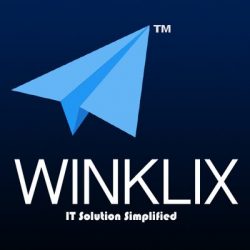Sydney is becoming a rising hub for artificial intelligence, and choosing the right AI development company in Sydney is now a key decision for businesses aiming to adopt AI solutions. From automation tools to predictive analytics, AI is shaping how Sydney-based companies operate in 2025 and beyond.. Choosing an AI development company in Sydney has become essential for businesses embracing automation and intelligent solutions
Still, making AI work isn’t always a smooth ride. There’s a lot to gain, but also plenty to figure out. Here’s what’s really happening on the ground for Sydney businesses.
Sydney’s Rise as an AI Powerhouse
Sydney’s tech scene is buzzing. Startups, universities, and big companies all pour energy and money into AI, and the momentum keeps building. What’s driving it? There’s a deep pool of skilled AI developers, government backing for digital projects, and a steady surge in demand for smarter, faster ways to work. More AI companies keep popping up, and that just adds fuel to the fire. For businesses—whether in finance, retail, healthcare, logistics, or real estate—it’s never been simpler to dive in. Working with an AI development company in Sydney ensures access to local expertise, compliance, and industry-specific understanding
Where the Big Opportunities Are
- Automating the Grind
Sydney businesses are using AI to ditch repetitive, manual work. Partnering with local AI experts, they’re trimming down costs and letting people focus on what matters.
- Better Customer Service
With chatbots, smart recommendations, and predictive tools, brands can talk to customers quicker and make the experience feel more personal.
- Smarter Decisions With Data
Everyone’s swimming in data. Sydney’s AI developers help companies turn all that raw info into real-world insights they can act on.
- Tighter Security
Digital threats keep growing, and companies need AI-powered cybersecurity to keep up.
- Health Tech Breakthroughs
AI in healthcare is taking off—from faster diagnostics to remote care, the industry is seeing real change.
The Challenges Nobody Can Ignore
- Upfront Costs
Getting AI off the ground isn’t cheap. Startups especially feel the pinch when it comes to infrastructure and training.
- Data Privacy Rules
Australian laws on data are strict. Companies handling sensitive information have to play by the rules, which isn’t always easy.
- Not Enough Quality Data
AI needs lots of good data to work well. In some Sydney industries, that’s still a stumbling block.
- Chasing Talent
Even with plenty of skilled engineers around, the best AI developers are still in high demand—and tough to find.
- Old Systems, New Problems
Trying to bolt AI onto outdated tech can turn into a headache fast.
Why Local AI Experts Matter
Bringing in a Sydney-based AI team means businesses get smarter planning, less risk, and the newest tech on their side. They can scale up quickly, stay compliant, and keep everything secure. Plus, local partners know how to tailor solutions for Sydney’s biggest industries—whether it’s retail, real estate, healthcare, or finance.
Bottom Line
AI is changing the game in Sydney. Companies that team up with experienced, local AI developers aren’t just keeping up—they’re pulling ahead. Sure, there are hurdles, but the payoff—more efficiency, sharper accuracy, better automation, and real innovation—makes AI an investment that’s hard to ignore.Partnering with the right AI development company in Sydney can help you innovate faster and stay competitive




